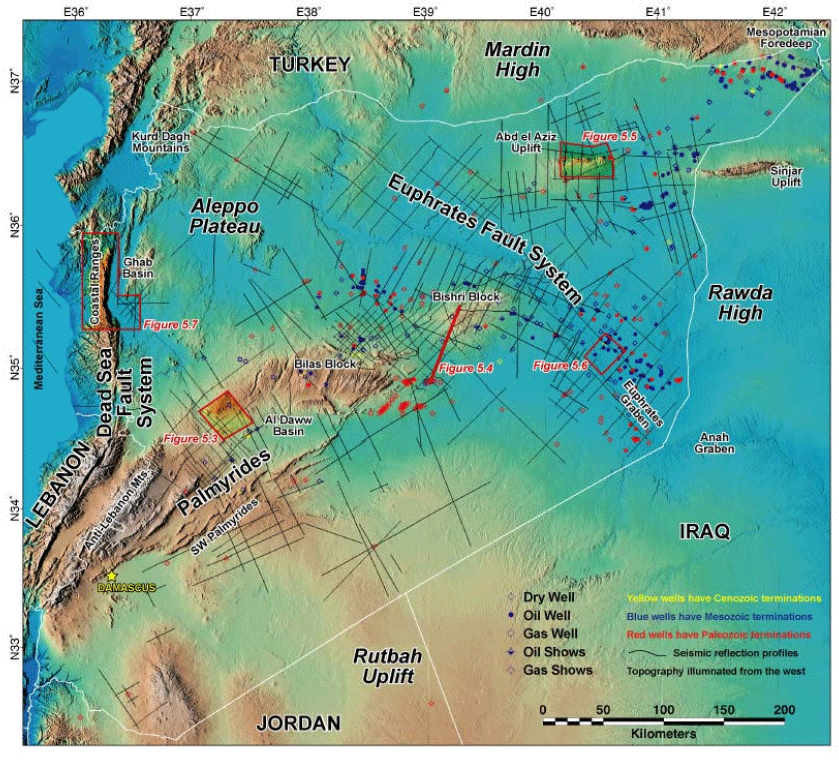
Using a variety of geophysical and geological data, the Phanerozoic tectonic evolution of Syria has been interpreted. The study is inspired by the diverse styles of tectonic deformation within Syria generated by long-lived proximity to active plate boundaries. The work is also relevant to hydrocarbon exploration. The availability of seismic reflection and refraction profiles, wells, and other resources made this research possible. Three studies focused on specific areas of Syria are presented. The first is a seismic refraction interpretation along a north – south profile in eastern Syria. The results show that metamorphic basement depth (and hence Paleozoic thickness) in southeast Syria is greater, by >2 km, than that in the northeast.
The next study interprets the structure and tectonics in northeast Syria. During Late Paleozoic and Mesozoic time northeast Syria was an extension of the Palmyride trough. In the Maastrichtian, regional extension opened the Abd el Aziz and Sinjar graben that were structurally inverted in the Late Cenozoic to form the present topography. The third study concerns the Ghab Basin in western Syria. This 3.4 km deep Plio- Quaternary pull-apart basin suggests that the Dead Sea Fault System has only been active in Syria since the end of the Miocene in accordance with a two-phase model of Red Sea opening.
The final study integrates the previous interpretations with new work to provide a tectonic evolutionary model that shows the Phanerozoic development of all Syria. This model is closely tied to stratigraphic data that improve the interpretation of many tectonic events, and put the results into a paleogeographical context. The model shows how specific deformation episodes within Syria have been penecontemporaneous with regional plate tectonic events. The Late Paleozoic / Mesozoic northeast trending Palmyride / Sinjar trough formed across central Syria in response to Permo-Triassic opening of the NeoTethys Ocean. Proximal subduction in the NeoTethys created the Late Cretaceous Euphrates Fault System and Abd El Aziz / Sinjar graben in eastern Syria. Late Cretaceous to Late Miocene collisions and shortening along the northern Arabian margin caused platform-wide structural inversion, uplift, and shortening. This compression continues today under the influence of Arabia / Eurasia convergence.
Click here to view a PDF file of the complete dissertation
Figure 5.2. Map showing topography of Syria, seismic reflection and well data locations, and locations of other figures in this paper. Wells colors indicate depth of penetration, symbols show best available knowledge regarding hydrocarbon status of the wells as summarized from various literature sources. The map projection listed is used for this and all subsequent maps.
